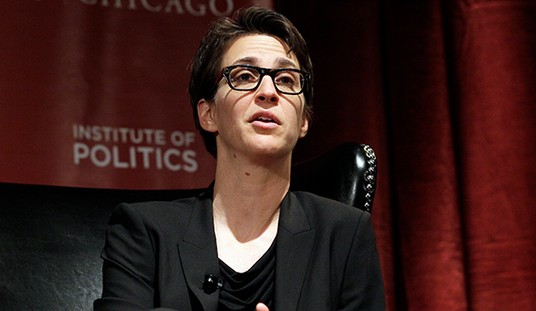It’s amazing what the promise of federal pork can do, eh? The editorial board of the LA Times has been anything but friendly to Donald Trump, but the president’s insistence on a trillion-dollar works-project bill has them asking California Democrats to put a pause on “the resistance.” They want the pork to flow into the Golden State in the short term … and the resistance can wait until later:
Two things ought to come to mind in California when President Trump says he plans to spend $1 trillion on infrastructure. And no, they’re not “Oroville” and “San Jose,” although those are good clues.
The first is that if the federal government is going to prioritize vast new infrastructure spending, California’s water projects should be near the top of the list. Bring it on. …
The state once tried to go it alone but ran out of money and turned to the federal government to complete the Central Valley Project. Later projects built largely by and for Californians had federal help, and such help remains necessary if the state is to maintain and update its water storage and delivery systems to keep pace with an increasingly volatile climate.
However, they’re not exactly optimistic about the outcome:
The second thing that Trump’s $1-trillion promise ought to be telling Californians is this: Don’t hold your breath or wait by the mailbox. If the infrastructure package ever materializes, it is expected to consist largely of tax incentives for private businesses to build whatever will produce the best return — regardless of whether they would be the right projects for environmental sustainability or human health and comfort.
Ahem. This comes from the same state that has poured billions of its tax and bond dollars into building a semi-high-speed railroad between Los Angeles and San Francisco, despite having more than a half-dozen air carriers servicing that same route. After several years, the tracks don’t come within a hundred miles of either city, and even its first leg still hasn’t been completed after nearly a decade of planning and spending. In fact, from the project’s latest construction update, it does not appear that a single mile of actual new high-speed track has been laid anywhere in the state.
The LA Times editorial board has backed this project for almost a decade now, rather than spending money on water projects or any of a number of higher priorities. Even as the projected cost for this boondoggle hit $98 billion and no one could offer a convincing explanation as to why a fixed-rail system across the San Andreas Fault was superior to air service, the LA Times’ editors and Democrats pushed for spending state and federal resources on the 30-year project. Meanwhile, California’s water infrastructure has decayed, along with most other public-use infrastructure in the state. They want the Trump administration to bail them out from an egregious mismanagement of public resources — but at least are realistic to know that they probably won’t get it.
Interestingly, the Washington Post offers considerable skepticism over the idea that a trillion-dollar infrastructure project will boost the economy:
China spent more than $1.4 trillion on infrastructure in 2016, splurging on railroads, bridges, roads and telecommunications. Over the past decade, it has invested $11 trillion on these kinds of projects; economists say it will need to continue investing about $2 trillion a year to maintain economic growth at today’s rates. These projects have been important — they’ve added more than 12,000 miles of high-speed rail (China is home to 60 percent of the world’s high-speed rail) and 30 new airports since 2011.
Those are impressive figures. But it’s not clear that the building binge has had much effect on the economy. One study out of Oxford University found that half of China’s infrastructure investment destroyed economic value rather than creating it. (Think of ghost cities full of empty apartments and offices.) Additionally, it found that the vast majority of projects are delayed and over budget. This, even though China’s autocrats can seize property and disregard regulation pretty much with impunity. “Unless China shifts to fewer and higher-quality infrastructure investments, the country is headed for an infrastructure-led national financial and economic crisis, which is likely to spread to the international economy,” the study’s authors concluded.
The United Arab Emirates — home to Dubai — and Qatar also have invested heavily in infrastructure, using their oil-fueled budgets to build fancy new airports and transportation systems. That construction looks good, but it hasn’t helped those countries’ economies weather the international slump in oil prices. It’s worth noting, too, that both countries have much lower labor costs than the United States does. That’s in large part because those countries’ construction firms rely heavily on immigrant labor. Numerous human rights groups have documented horrible working conditions for those laborers.
One example the Post never mentions: Barack Obama’s $800 billion stimulus package, supposedly filled with “shovel ready jobs” for updating public infrastructure. As conservatives argued at the time, it was nothing more than a pork-barrel project for Democrats and a shell game for bailouts to state governments — with California one of its beneficiaries. Not only did it not lead to economic growth, it didn’t actually do much for infrastructure either.
Obama’s Transportation Secretary Anthony Foxx tells CBS News this morning that the benefit comes with targeted spending, rather than using the “peanut butter” approach. Congress will spend the money, so you can guess which approach will be taken without too much difficulty. Get ready for more “bullet trains” and bike paths, and more ways to let state governments off of budget hooks.








Join the conversation as a VIP Member